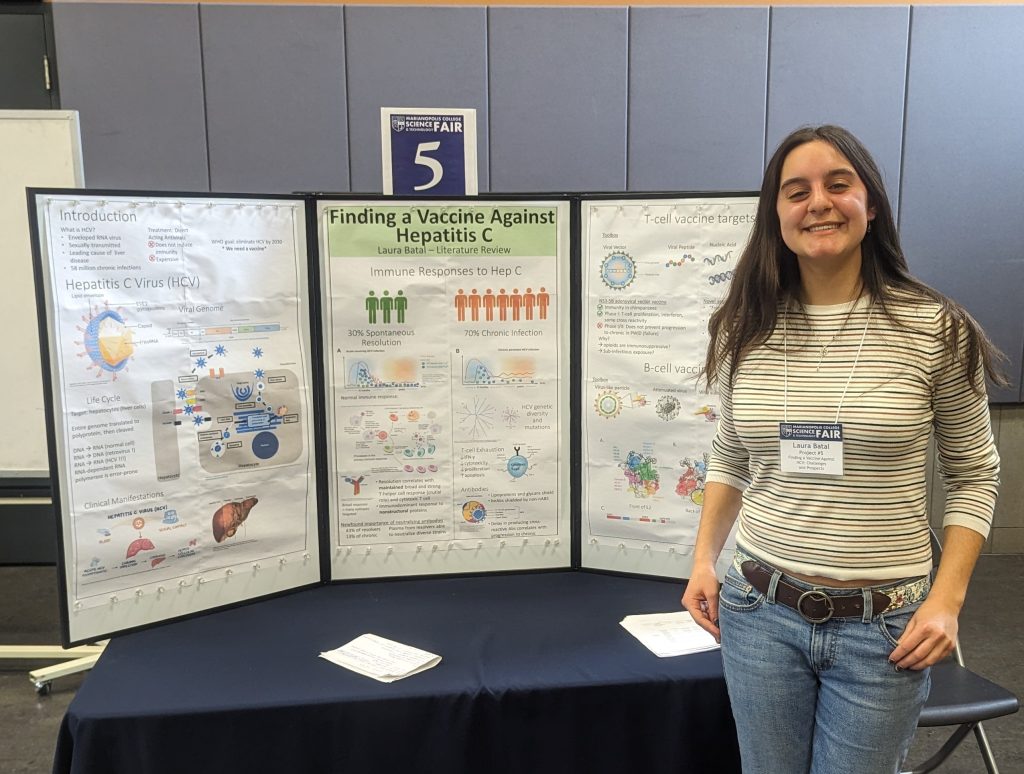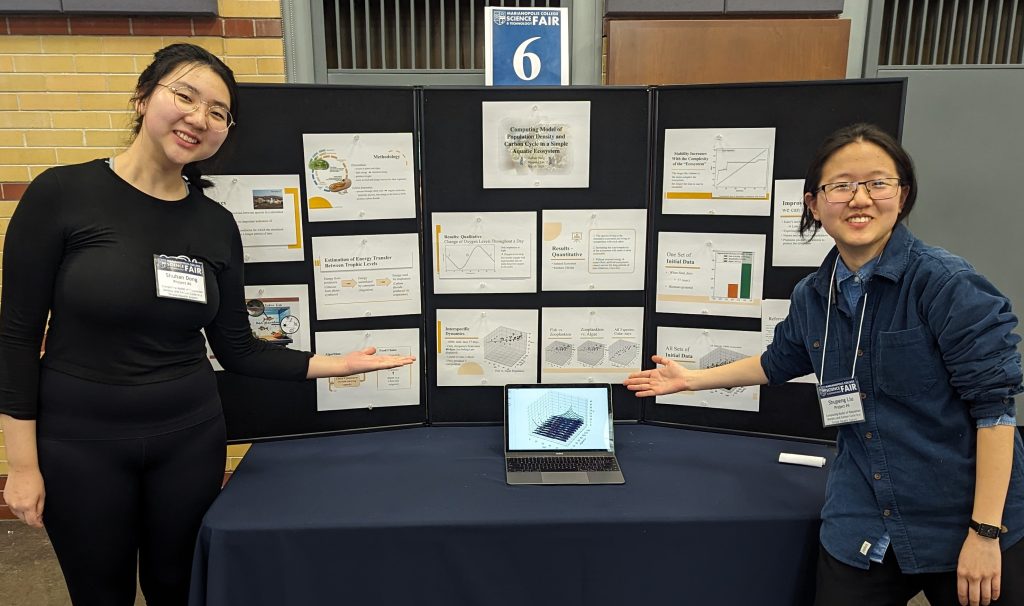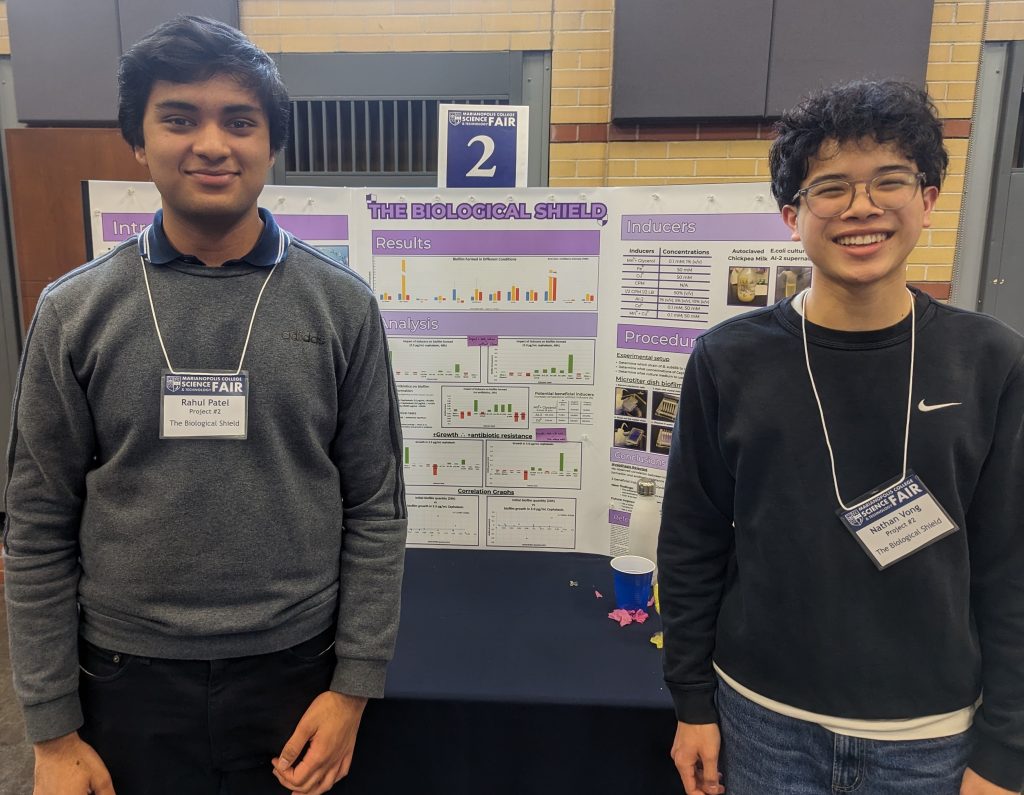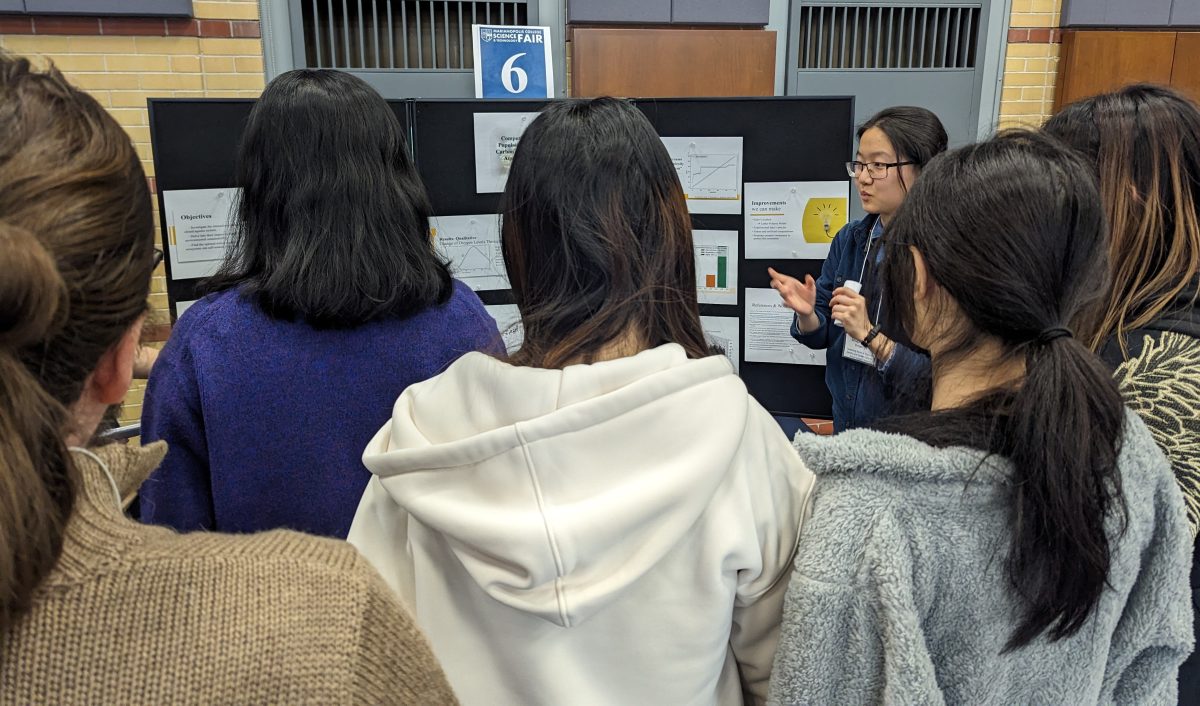Three teams from Marianopolis will be representing the College at the Hydro-Quebec Montreal Regional Science and Technology Fair next month.
Science projects by Honours Health Science students Laura Batal, Shuhan Dong and Shupeng Liu, and Rahul Patel and Nathan Vong were selected to advance to the regional competition where they’ll go up against the top student-projects from cegeps and colleges across the city.
Read more about the experimentation and study projects they’ll be presenting to judges at Laval Senior Academy from March 24-26.
The winners will have the opportunity to showcase their work at the Quebec provincial finals in April.
Finding a Vaccine Against Hepatitis C: Challenges and Prospects
Laura Batal

This literature review explores recent advances in research that could potentially lead to the development of a vaccine against the hepatitis C virus (HCV).
HCV is the leading cause of liver disease worldwide despite the availability of treatments such as direct acting antivirals (DAAs). Indeed, the high cost of DAAs and their inability to provide immunological protection against reinfection have made the development of a prophylactic vaccine a critical global health issue.
This literature review examines HCV’s mechanism of action and transmission, as well as risk factors, life cycle, effects on the liver and the diverse immune responses to infection.
The review discusses some of the challenges these characteristics present to the development of a vaccine and also delves into the most recent promising vaccine developments, including viral vectors, recombinant proteins, and virus-like particles.
Computing Model of Population Density and Carbon Cycle in a Simple Aquatic System
Shuhan Dong and Shupeng Liu

Over the years, attempts to build large artificial ecosystems that can self-sustain for long periods of time have yielded mixed results.
This project examines different approaches to creating such ecosystems by developing a computer algorithm to simulate simple, terrarium-like ecosystems. Terrariums, often used in educational contexts, are sometimes seen as small self-sustaining ecosystems.
This computing model aims to find the optimal initial conditions that lengthen the survival time of a simplified ecosystem whose only source of energy inflow is sunlight.
The simulation considers trophic dynamics between the algae Chlorella vulgaris, and zebrafish, which mainly rely on algae for nutrition and growth in the absence of artificial feeding. The consumption rate of algae by zebrafish is estimated by calculating biomass transfer between two trophic levels.
Dissolved oxygen levels meanwhile can be predicted by determining the photosynthesis rate of Chlorella vulgaris and cellular respiration rates of both species. By taking into account the population of the two species and the dissolved oxygen levels, the computing model can estimate the termination time of the ecosystem.
The Biological Shield
Rahul Patel and Nathan Vong

This experiment provides a new perspective on the study of biofilms and suggests possible novel approaches to protecting gut microbiome.
A biofilm is a community of microorganisms made of one or several species that stick together and live on a surface. The microorganisms form an extracellular matrix, making them more resistant to the stress of their environment, notably antibiotics. Biofilm formation is often studied by looking at how they strengthen pathogenic bacteria with the intention of limiting its formation.
Currently, there is little research on how biofilm could potentially be a positive way to strengthen the probiotic bacteria in humans and protect our gut microbiome from the use of oral antibiotics.
The goal of this experiment is to determine whether certain products promote biofilm formation and if a larger biofilm is inherently more resistant to antibiotics. The experiment involved adding specific ions (Cu2+, Fe3+, Mn2+ (with glycerol), Co2+), food products (chickpea milk), and intercellular signaling molecules (autoinducer-2) to a culture of Bacillus subtilis to test if these substances can promote antibiotic resistance in this probiotic bacterium.
Through the methods of a microtiter dish biofilm assay, the amount of biofilm formed is quantified at varying incubation times and concentrations of cephalexin, a commonly used oral antibiotic in human treatment.
The results indicate that certain products promote biofilm formation in both the absence and presence of cephalexin, although there was no correlation found between the initial size of the biofilm and its antibiotic resistance.
Results suggest that the concentration of cephalexin used in the presence of these inducers caused a non-lethal stress which further promoted biofilm growth. Although the experiment does not entirely prove the beneficial properties of all the inducers, it is a start to developing methods that can promote biofilm formation.

